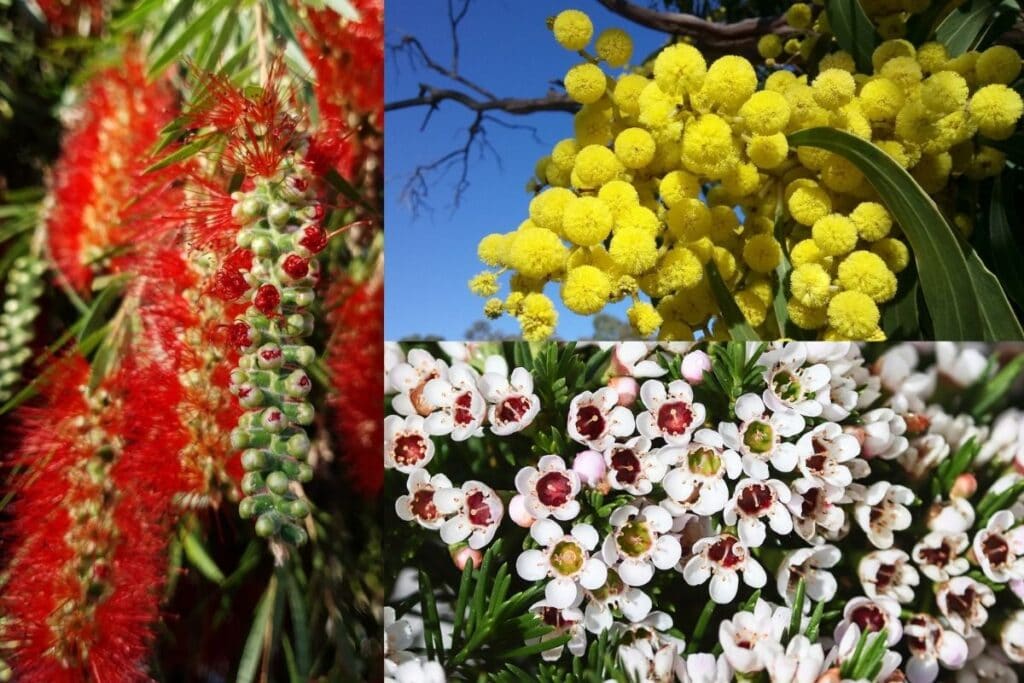Australian native flowers are known for their vibrant colors, so adding them to your garden or bouquet will add a nice pop of color—if your climate allows, that is.
Many native Australian flowers will either need to be brought inside during the cooler months, or replaced every year as an annual flower would.
There are a plethora of flowers that are native to Australia, some more unique than others.
#1. Golden Wattle
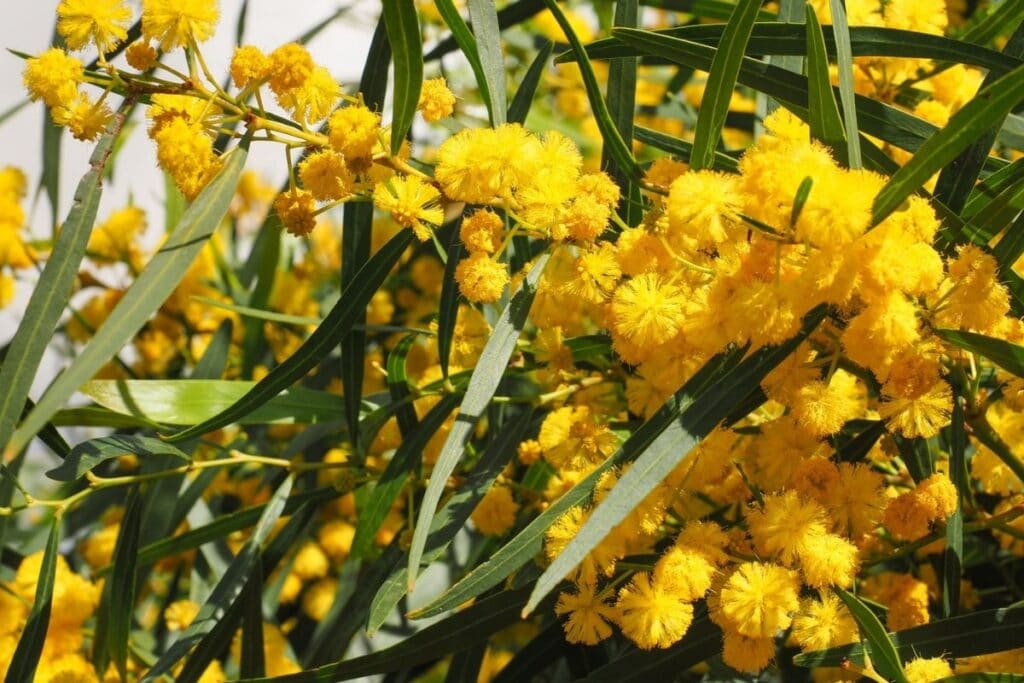
The Acacia pycnantha, commonly known as the golden wattle, is the national flower of Australia. It is native to South Australia and can reach a height of 8 m (26 ft).
The Golden Wattle, as the Floral Emblem of Australia, blooms in spring and produces masses of bright yellow flowers.
#2. Kangaroo Paw

The kangaroo paw is the common name for anigozanthos, a herbaceous perennial that grows fuzzy, paw-shaped flowers similar to that of a kangaroo—hence the name. Kangaroo Paws are found in eleven different species across the southwest of Western Australia, including streams, woodlands, and wetlands.
These flowers have also been referred to as “cat’s paw”, which is more relevant in any other part of the world where kangaroos are not native.
There are not many locations in the US that will support a kangaroo paw plant in your garden, as they do best in growing zones 10 and 11.
The good news is that these flowers grow well in containers, meaning you can keep them outside in the warmer months and bring them inside when it becomes too cold.
There is also the option to plant your kangaroo paws, knowing that they will die off in the winter and will need to be replaced the following season. This is a good option if you want to use your kangaroo paws as cut flowers in a bouquet.
#3. Pink Rock Lily
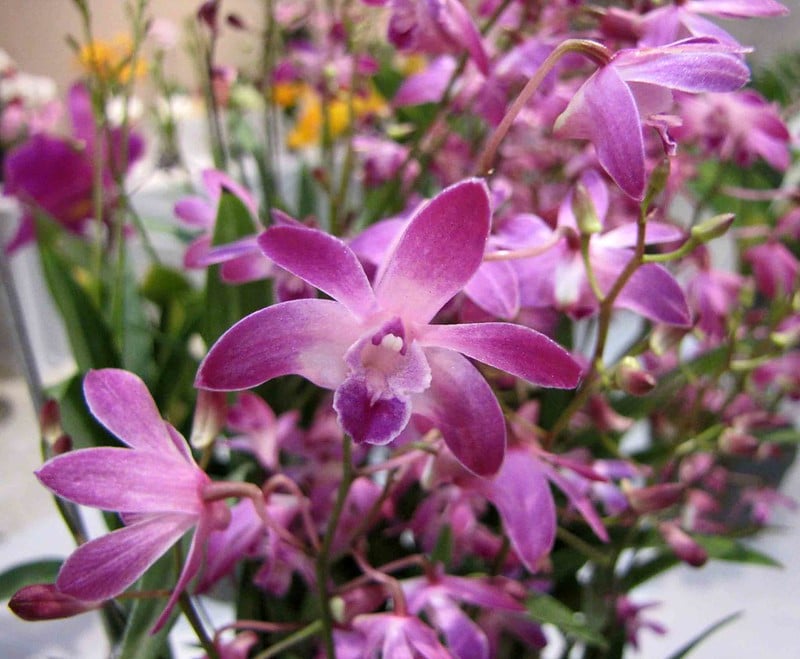
The pink rock lily or pink rock orchid (Dendrobium kingianum) gets its name from the areas where these flowering plants grow, on rocks! That’s right, these plants will climb their way onto the surface of rocks, which is where they thrive.
The rock lily requires a partially-shaded area and should be grown in a location where shade is abundant.
Since these pink flowers grow primarily on rocks or cliff sides, transferring them to an indoor location for winter months is not an easy task. If you do want a rock lily as an indoor plant, there has been some luck starting them in a hanging basket filled with leaves and bark.
#4. Lilly Pilly
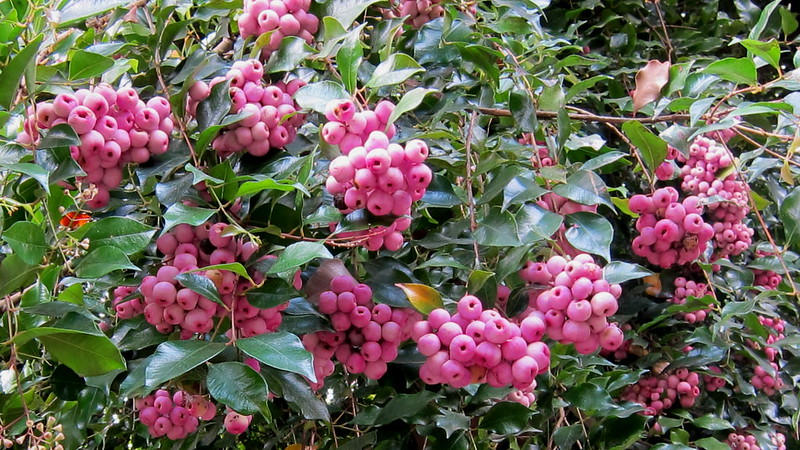
The Lilly pilly (Syzygium smithii) is a fast-growing evergreen tree that is often trimmed as a hedge. This tree produces small red or purple fruits that are edible and are often referred to as Australian cherries.
Although still accustomed to warmer climates, the Lilly pilly can grow in growing zones 9-11, meaning that some southern states can grow the Lilly pilly as a perennial.
Other regions can still grow the Lilly pilly, but it would need to be grown as an annual or brought inside during winter months.
#5. Bottlebrushes
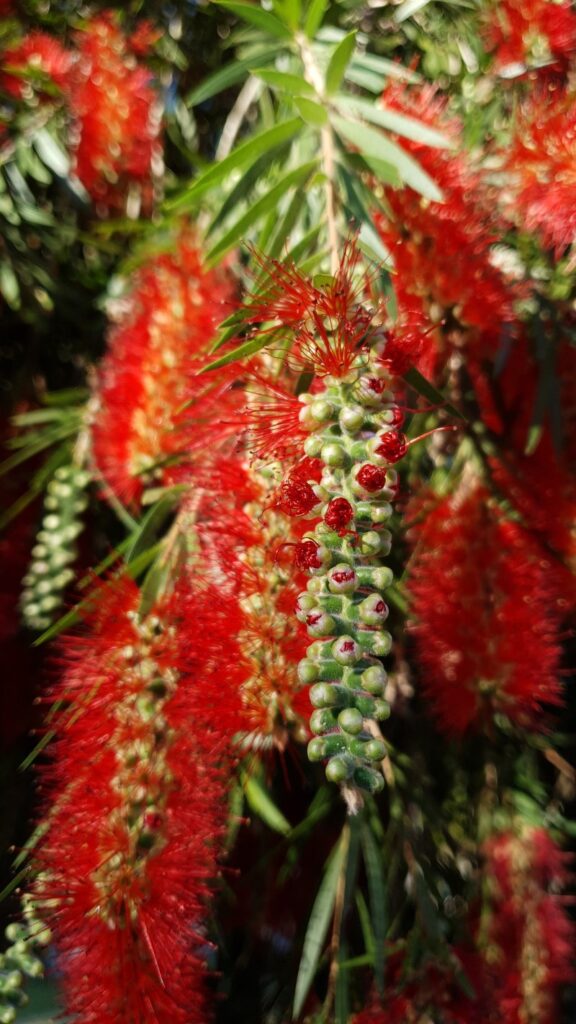
Once you see a bottlebrush flower (Callistemon), you’ll understand exactly where the name comes from. Bottlebrushes are a shrub whose flowers closely resemble that of a bottlebrush.
These flowers can grow up to 12 inches long and are actually composed of many individual blossoms. The bottlebrush flowers are commonly planted to attract wildlife such as butterflies and hummingbirds.
The bottlebrush is another plant that will need to be kept warm throughout the year, so most US locations will not be warm enough to keep this shrub kept outside year-round. This evergreen shrub can be kept in a container, meaning that it can easily be brought inside during winter months.
#6. Waxflower
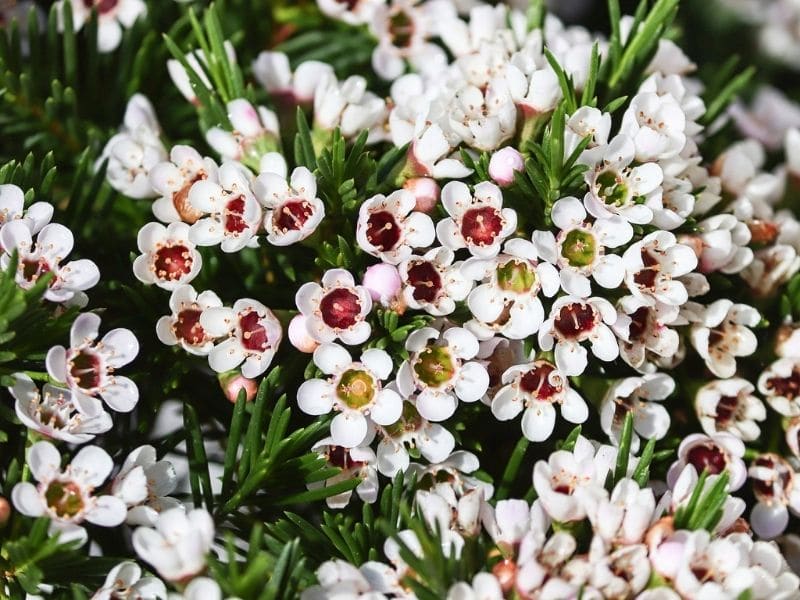
The waxflower (Chamelaucium) is unique in the way that they primarily bloom in the late winter and early spring months when most flowers haven’t bloomed yet. The waxflower also has a longer blooming season of up to 3 weeks, making it a popular choice for cut flowers.
The waxflower plants are frost hardy down to 27 degrees Fahrenheit, meaning that in cooler regions, they would need to be brought inside to be kept alive. In warmer regions, they can be kept as a perennial, and are a relatively hardy plant.
#7. Flannel flower
The Flannel Flower (Actinotus helianthi) is an iconic Australian native plant celebrated for its unique appearance and cultural significance.
Renowned for its distinctive appearance, the plant features silvery-gray foliage and bears umbrella-like flower clusters with a soft, velvety texture resembling flannel. The blooms are typically white or cream-colored, creating a striking contrast against the plant’s foliage.
Endemic to the eastern regions of Australia, it thrives in sandy soils and coastal environments. These plants bloom from spring to early summer, adding a touch of elegance to their natural habitats.
With its distinct beauty and cultural significance, the Flannel Flower symbolizes Australia’s rich botanical diversity and Indigenous heritage.
#8. Heart-Leaf Flame Pea

The Heart-Leaf Flame Pea (Chorizema cordatum) is a visually striking Australian native plant known for its heart-shaped leaves and vividly colored flowers. It predominantly inhabits the sandy soils and heathlands of southwestern Australia. This perennial evergreen shrub belongs to the Fabaceae family and typically grows to around 1 to 2 meters tall.
The heart-shaped leaves of the Flame Pea, which are glossy green and slightly succulent, add to its ornamental appeal. The real showstopper is the cluster of tubular flowers that appear in late winter to spring.
These flowers display a remarkable array of warm colors, ranging from fiery oranges and reds to bright yellows, attracting pollinators like honeyeaters.
Thriving in well-drained, sandy soils and exposed, sunny locations, the Heart-Leaf Flame Pea is well-adapted to the Australian climate.
With its distinct beauty and cultural significance, the Flannel Flower symbolizes Australia’s rich botanical diversity and Indigenous heritage.
Caring for Native Australian Flowers Indoors
If you live in a region that does not support the continued growth of most Australian flowers throughout the entirety of the year, you may be bringing your plants inside for the winter months.
For plants that require full sun, a greenhouse or enclosed porch is ideal. If you don’t have access to a greenhouse, a window sill that receives heavy amounts of sun throughout the day should work just fine.
Continued watering is important, even in the wintertime. During these months, you may only need to water every 4 to 5 days. Most of the Australian native plants will require soaking when watered, as opposed to a light watering that most indoor plants receive.
Caring For Australian Native Flowers in Your Garden
There are several things to consider when growing an Australian native plant in your garden. First, it is important to consider the climate you live in; you will need to verify that your climate can support the flowers of your choice.
Some Australian native flowers will require growing zones of 10 to 11, meaning that unless you live in the most southern points of Florida, Texas, or California, you are probably out of luck. That being said, you can always treat these plants as annuals, meaning they will die in the winter.
Some of these varieties can be grown in containers, so keeping them inside or in a greenhouse during the winter months may be an option.
When it comes to Australian native plants, there are some watering techniques that we may not be used to in the US. A majority of Australian native plants will require full root penetration when it comes to watering. This means that spraying the surface of the soil may not be enough.
Watering in the cool evenings will be the most effective. Irrigation systems are the best way to ensure your Australian native plants are getting the water they need, the right way.
Fertilizing your Australian native plants may also be important, as our soil may not closely resemble the native soil that these plants are adapted to.
Before planting any plant that is non-native, make sure you understand the nutrient needs and have a plan for how to supply these nutrients. There will be certain fertilizers that work best for certain plants, so make sure to get the most effective kind.
FAQs
What is the most popular native plant in Australia?
The Golden Wattle (Acacia pycnantha) is Australia’s most popular native plant. It is also the country’s national floral emblem, known for its vibrant golden-yellow flowers.
Is lavender native to Australia?
No, Lavender is not native to Australia; it is native to the Mediterranean region. However, it is cultivated and widely used in gardens across Australia for its aromatic qualities and ornamental appeal.
What plant life is unique to Australia?
Australia is home to a diverse range of unique plant life, much of which is adapted to the country’s distinctive climate and conditions. Some examples include the Kangaroo Paw (Anigozanthos spp.), Banksia species, Eucalyptus trees (gum trees), and the iconic Wollemi Pine (Wollemia nobilis), which was once thought to be extinct and is considered a “living fossil.”
For more interesting flowering plants, check this page.

